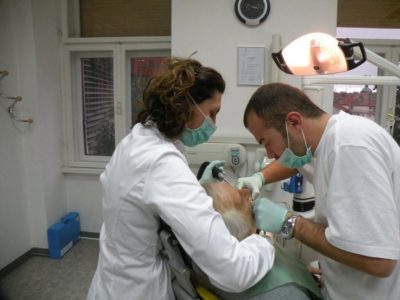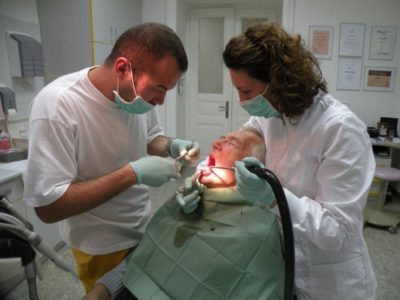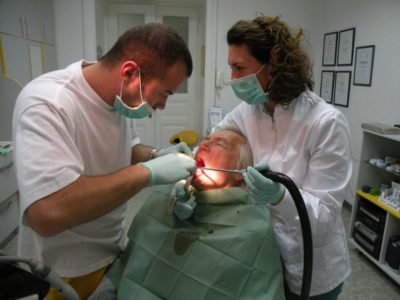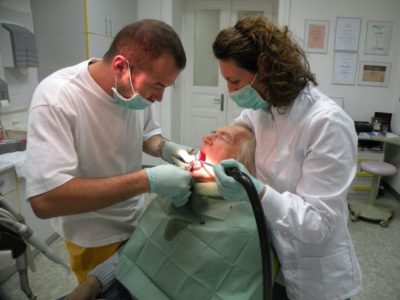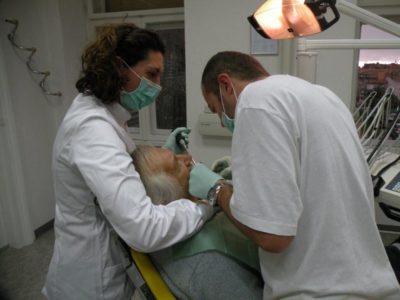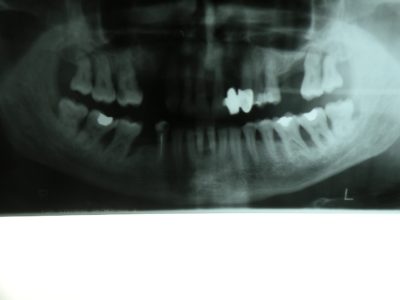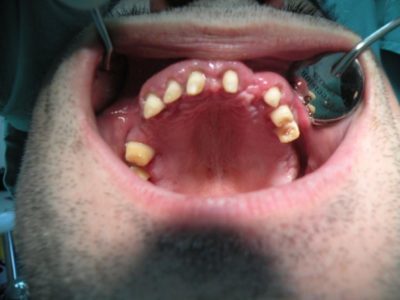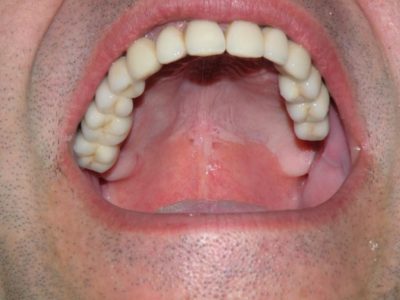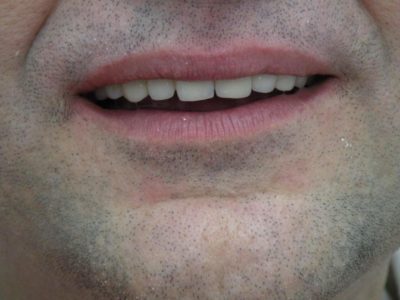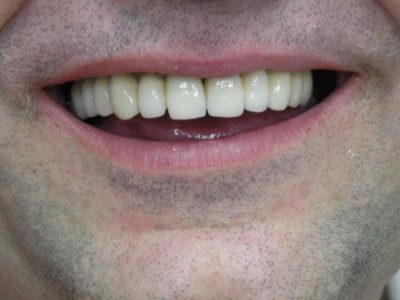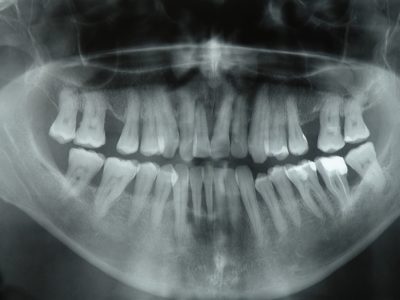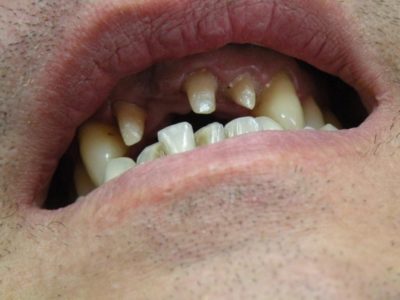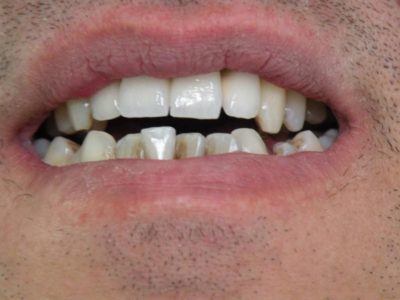Periodontitis treatment
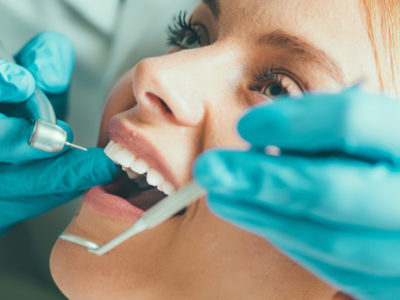
What is and how does periodontosis occur?
Sediments on teeth and between teeth and gums (plaque) are an ideal place for the growth and the evolution of bacteria that cause periodontosis. With the decomposition of the food scraps (remained between teeth), that are at the same time also the food for the bacteria, compounds that irritate gums (gingiva) are created. Gums (gingiva) react to that by creating an infection process, i.e. gingivitis (gums inflammation).
If the gingivitis spreads to the area between the bone and the periodontal ligaments which connect the toot to the bone, then periodontosis occurs (inflammation of the supporting tissue of the tooth).
The first noticeable symptoms of gum inflammation is, usually, gum bleeding. As the disease progresses, the inflamed gums begin to progressively divide itself from the teeth and as the sediments harden – dental calculus is created and is very easily spread further below the edge of the gums.
Teeth loss
If the inflammation is not treated and the dental calculus is not removed, “pockets” are created in the gums. In those „pockets“ bacteria can freely reproduce further. Food scraps in those “pockets”, dental plaque and even pus under certain circumstances can cause bad breath.
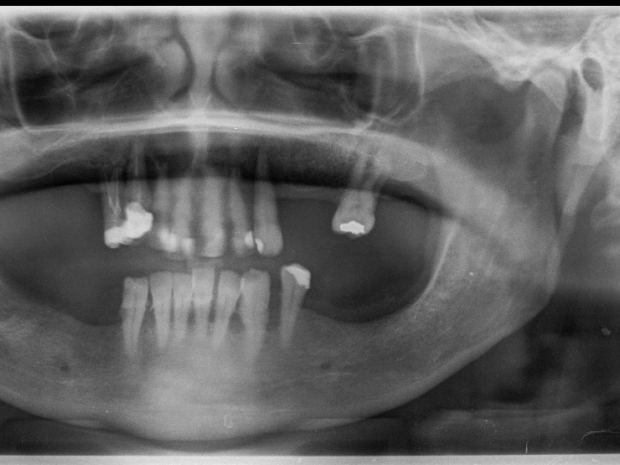
If gum inflammation is not treated, in a certain time teeth begin to wobble and, during the years, fall out.
With the cleansing of plaque the possibility of periodontosis formation is reduced. Brushing teeth is under no circumstances to be avoid, although it is not important the exact time of the day when you wash your teeth, because plaque needs 24 hours to start hardening. Therefore, it is all the same if you wash your teeth in the morning or in the evening.
Besides the already mentioned, at least twice a years it is necessary to check up your teeth with a stomatologist in order to control regularly the condition of the teeth, the gingiva and of the entire oral cavity.
If you already have “pockets” in your gums, you should visit your doctor of dental medicine every three months.
What can you do?
If you notice blood bleeding you must by no means stop brushing your teeth, you can simply exchange your tooth brush for a softer one because hard tooth brushes damage gums and strip dental necks.
Which ingredients are good for the maintenance of the health of the oral cavity: with the often consumption of food such as raw carrot, celery or apple you can massage your gums just by chewing them. Also, daily vitamin C intake (as fruit or dietary supplement) protects the gums from infections.
The tooth brush should be changed every three months.
Your stomatologist should by all means have an i-Top certificate, which guarantees his education in the field of correct maintenance of oral hygiene and it is then that every patient can feel secure that every advice he gets is correct.
At every stomatology check-up, the doctor should check the patient and instruct him how to maintain correctly his oral hygiene and recommend an adequate tooth brush and the use of interdental brushes.
In our practice Studio Stradiot, which has the i-Top certificate, besides the conventional methods of periodontosis treatment, we also have a laser of the latest generation, which allows us to simplify the invasiveness of the therapy of periodontosis and makes it practically painless for the patient.
